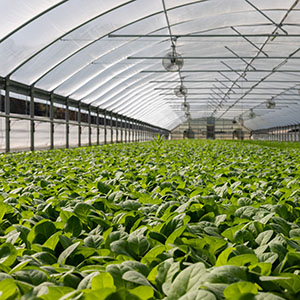Comparative study of coating agents for prevention of fine-dust-induced light transmittance reduction in greenhouse covering materials

Published: 29 June 2022
Abstract Views: 945
PDF: 417
HTML: 38
HTML: 38
Publisher's note
All claims expressed in this article are solely those of the authors and do not necessarily represent those of their affiliated organizations, or those of the publisher, the editors and the reviewers. Any product that may be evaluated in this article or claim that may be made by its manufacturer is not guaranteed or endorsed by the publisher.
All claims expressed in this article are solely those of the authors and do not necessarily represent those of their affiliated organizations, or those of the publisher, the editors and the reviewers. Any product that may be evaluated in this article or claim that may be made by its manufacturer is not guaranteed or endorsed by the publisher.
Similar Articles
- Aldo Calcante, Francesco M. Tangorra, Measuring oxygen saturation and pulse rate in dairy cows before and after machine milking using a low-cost pulse oximeter , Journal of Agricultural Engineering: Vol. 52 No. 2 (2021)
- Silvio Kosutic, Daniele De Wrachien, Report on the 41st International Symposium Actual Tasks on Agricultural Engineering, 19-22 February 2013, Opatija, Croatia , Journal of Agricultural Engineering: Vol. 44 No. 1 (2013)
- Tullia Gallina Toschi, Annachiara Berardinelli, Chiara Cevoli, Eleonora Iaccheri, Giuseppe Di Lecce, Alessandra Bendini, Luigi Ragni, Effectiveness of the mechanical excitation applied to the olive paste: possible improving of the oil yield, in malaxation phase, by vibration systems , Journal of Agricultural Engineering: Vol. 44 No. 4 (2013)
- Fabrizio Mazzetto, Aldo Calcante, DESIGN, DEVELOPMENT AND EARLY TESTING OFA DEVICE FOR THE MONITORING OF ZOOTECHNICAL EFFLUENT DISTRIBUTION USING RAINGUN DISTRIBUTION SYSTEMS , Journal of Agricultural Engineering: Vol. 40 No. 2 (2009)
- Francesco Bellomo, Paola D' Antonio, USING A GRAPE HARVESTER IN SUPER-INTENSIVE OLIVE CULTIVATION , Journal of Agricultural Engineering: Vol. 39 No. 1 (2008)
- Paola Concialdi, Vincenzo Bagarello, Vincenzo Alagna, Massimo Iovino, Laboratory evaluation of falling-head infiltration for saturated soil hydraulic conductivity determination , Journal of Agricultural Engineering: Vol. 51 No. 1 (2020)
- Aristide Timene, Haman Djalo, Design of a five-bar duckbill-type mechanism for sorghum transplanting , Journal of Agricultural Engineering: Vol. 54 No. 2 (2023)
You may also start an advanced similarity search for this article.

 https://doi.org/10.4081/jae.2022.1334
https://doi.org/10.4081/jae.2022.1334







